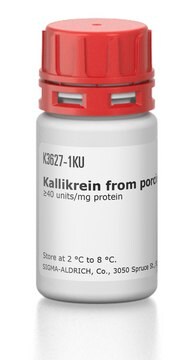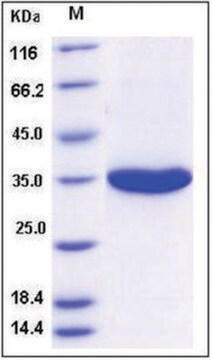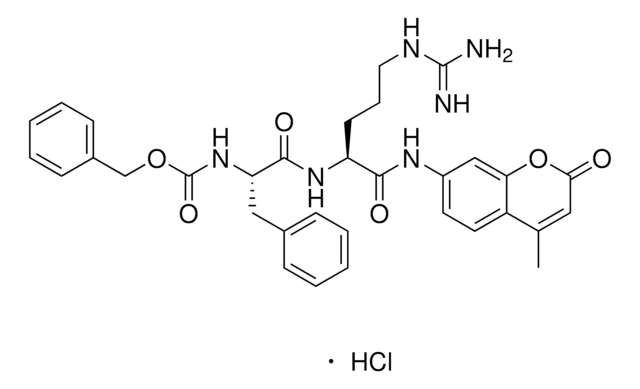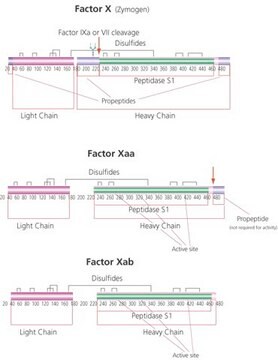K2638
Kallikrein from human plasma
buffered aqueous solution, ≥5 units/mg protein
Synonyme(s) :
Kininogenase, Kininogenin
About This Item
Produits recommandés
Forme
buffered aqueous solution
Niveau de qualité
Activité spécifique
≥5 units/mg protein
Numéro d'accès UniProt
Conditions d'expédition
dry ice
Température de stockage
−20°C
Informations sur le gène
human ... KLK1(3816)
Vous recherchez des produits similaires ? Visite Guide de comparaison des produits
Description générale
Application
- to culture human hepatocellular carcinoma cell line
- to study its effects on the cleavage of Neisserial heparin binding antigen (NHBA) from Neisseria meningitidis
- in peptidase inhibition assay
Actions biochimiques/physiologiques
Définition de l'unité
Forme physique
Code de la classe de stockage
12 - Non Combustible Liquids
Classe de danger pour l'eau (WGK)
WGK 1
Point d'éclair (°F)
Not applicable
Point d'éclair (°C)
Not applicable
Équipement de protection individuelle
Eyeshields, Gloves, multi-purpose combination respirator cartridge (US)
Certificats d'analyse (COA)
Recherchez un Certificats d'analyse (COA) en saisissant le numéro de lot du produit. Les numéros de lot figurent sur l'étiquette du produit après les mots "Lot" ou "Batch".
Déjà en possession de ce produit ?
Retrouvez la documentation relative aux produits que vous avez récemment achetés dans la Bibliothèque de documents.
Les clients ont également consulté
Notre équipe de scientifiques dispose d'une expérience dans tous les secteurs de la recherche, notamment en sciences de la vie, science des matériaux, synthèse chimique, chromatographie, analyse et dans de nombreux autres domaines..
Contacter notre Service technique












